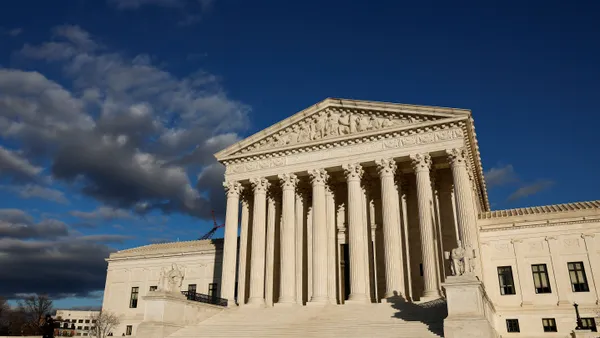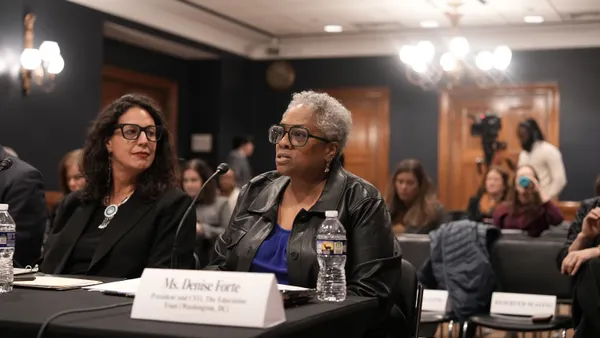Dive Brief:
- Charging tuition to students who attend schools out of their school or district boundaries is permitted in 26 states, and some districts in those states charge families tens of thousands of dollars for out-of-boundary transfer, according to a report from the Reason Foundation, a nonprofit Libertarian think tank.
- According to the analysis, five states — Arizona, Florida, Kansas, Oklahoma and Utah — have used four of the five recommended practices by the Reason Foundation for open enrollments, including allowing students to transfer to any public school within and across districts.
- Decreases in student enrollment during the COVID-19 pandemic may cause some districts to consider shifts in enrollment policies, including ways to better meet enrollment goals that align with school capacity limits. The foundation said one of the reasons for rejecting transfer requests is if the desired school has few available student seats.
Dive Insight:
In addition to permitting easy transfers, the Reason Foundation recommends states prohibit tuition charges at the new school. The foundation also advises transparency in how districts make open enrollment decisions for out-of-boundary students and how many open seats are available at each school.
The Reason Foundation said assigning school enrollment based on where students live can create barriers. This is particularly true for students from low-income families who may not be able to afford tuition at a new public school and for those at rural schools with fewer advanced courses available for college credit, the foundation said.
“Some wealthy public school districts intentionally use fees and tuition to block low-income students from transferring to their public schools," said report author Jude Schwalbach, an education policy analyst at Reason Foundation, in a statement. "All states should institute policies preventing these public school transfer fees.”
According to the Education Commission of the States, states set policies for district-level voluntary or mandatory open enrollments. Under voluntary open enrollment, districts can create transfer agreements with other districts. In mandatory open enrollment districts, all schools must accept transfer students, though some restrictions may apply such as limited capacities at schools.
State funding typically follows the student, ECS said, and depending on local and state policies, some portion of local funding may follow the student.
Some policymakers consider open enrollment as a form of public school choice, ECS said. The Reason Foundation promotes open enrollment policies as an option for students to have a school experience that best fits their needs, as long as there are open seats at the desired school.
Some states, including California and Colorado, have open enrollment policies that give priority to students who meet free or reduced-price lunch qualifications or to students from low performing schools. Connecticut and Nebraska use open enrollment approaches to improve integration in schools, ECS reports.
In its analysis, the Reason Foundation found that while 43 states have some type of open enrollment policy, only 11 make open enrollment mandatory. The report includes a state-by-state open enrollment analysis.







 Dive Awards
Dive Awards



